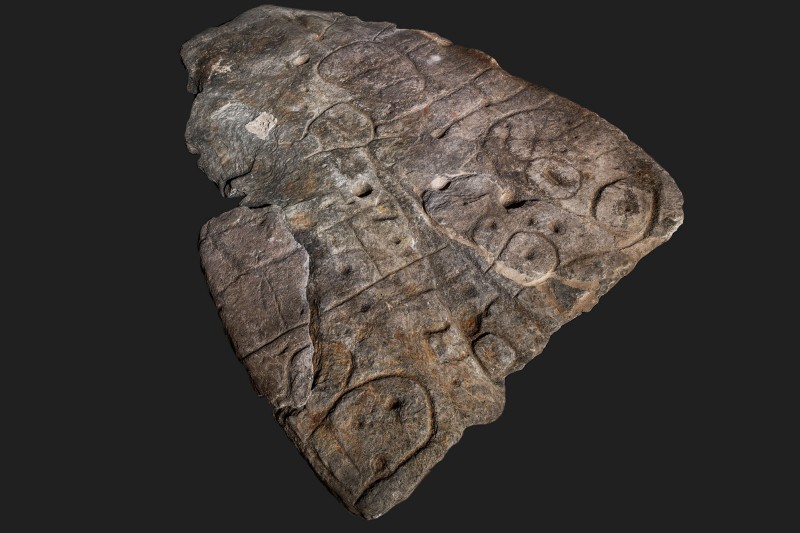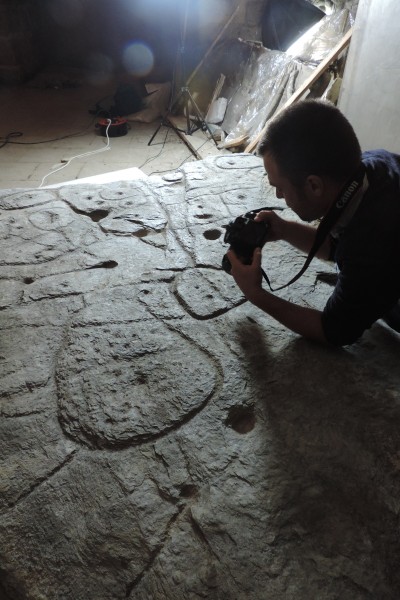Europe's oldest map, a stone slab, unearthed in France
The map likely represents an area along the River Odet in western France.

A 4,000-year-old stone slab, first discovered over a century ago in France, may be the oldest known map in Europe, according to a new study.
The Saint-Bélec Slab dates back to the early Bronze Age (2150-1600 B.C.) and was first discovered in 1900 in a prehistoric burial ground in Finistère, Brittany. It made up one of the walls of a cist, a stone box that housed the bodies of the dead. The slab was likely made before it was reused in the burial towards the end of the early Bronze Age (1900-1640 B.C.), according to a statement.
At the time of the discovery, the broken slab, which is 12.7 feet (3.9 meters) long, was moved to a private museum, and France's Museum of National Antiquities acquired it in 1924. It was then stored in a French castle, where it gathered dust until it was re-discovered in the castle's cellar in 2014. But only recently are researchers beginning to understand the interesting story behind this prehistoric slab.
Related: In photos: Early Bronze Age chariot burial
In 2017, a group of researchers in Europe started analyzing the engravings on the slab using high-resolution 3D surveys and photogrammetry, a process of analyzing an object through taking detailed photographs. They discovered that the slab had all the markings that would be expected of a map, such as motifs joined by lines. They also found that lines represented a river network, and its makers seemed to have deliberately used a 3D shape to represent a valley.

The researchers compared the engravings on the slab with elements of the French landscape and concluded that the slab represented an area of about 18.6 miles by 13 miles (30 kilometers by 21 km) along the River Odet in western France.
"This is probably the oldest map of a territory that has been identified," in Europe, study author Clément Nicolas from Bournemouth University told the BBC. The map was likely used by a Bronze Age prince or king to mark ownership over a particular area and suggests that we shouldn't underestimate the cartographical knowledge of past societies, Nicolas said.
Sign up for the Live Science daily newsletter now
Get the world’s most fascinating discoveries delivered straight to your inbox.
The territory was likely owned by a strongly hierarchical political entity that controlled the area tightly in the early Bronze Age, according to the statement.
The fact that it was later buried may mean that it was the end of their power, or it could have been a rejection of the power the elites held over society at the time, the authors hypothesized in the new study.
The findings were published in April in the French journal Bulletin de la Société préhistorique française.
Originally published on Live Science.

Yasemin is a staff writer at Live Science, covering health, neuroscience and biology. Her work has appeared in Scientific American, Science and the San Jose Mercury News. She has a bachelor's degree in biomedical engineering from the University of Connecticut and a graduate certificate in science communication from the University of California, Santa Cruz.









